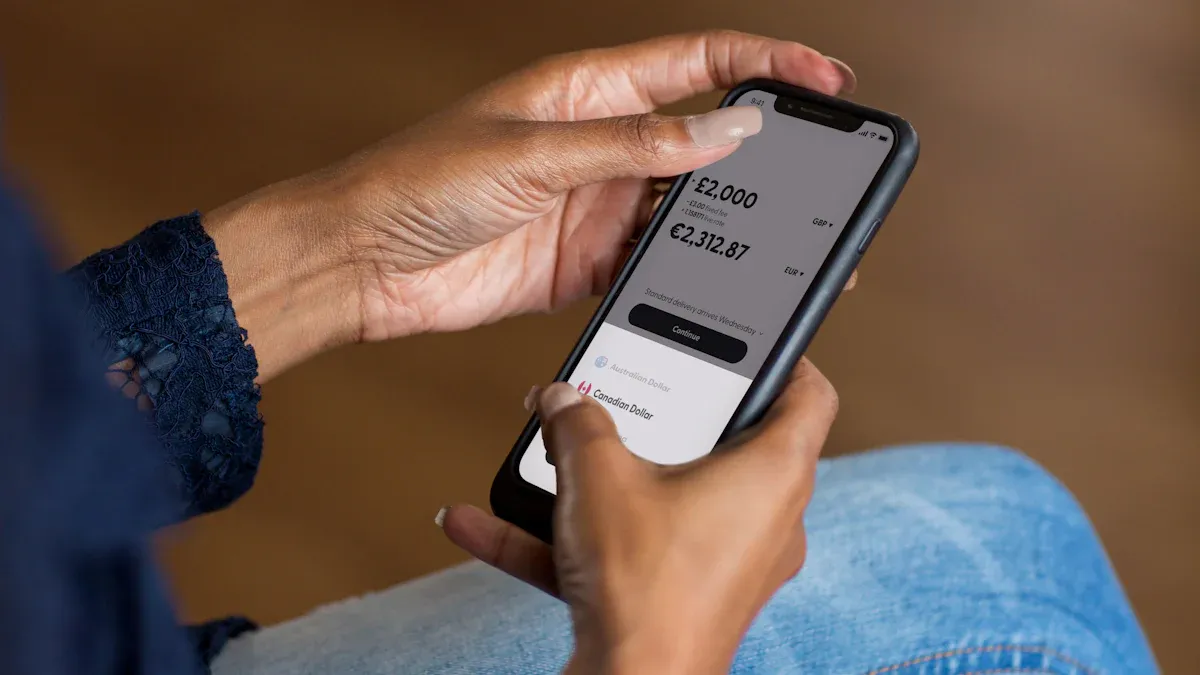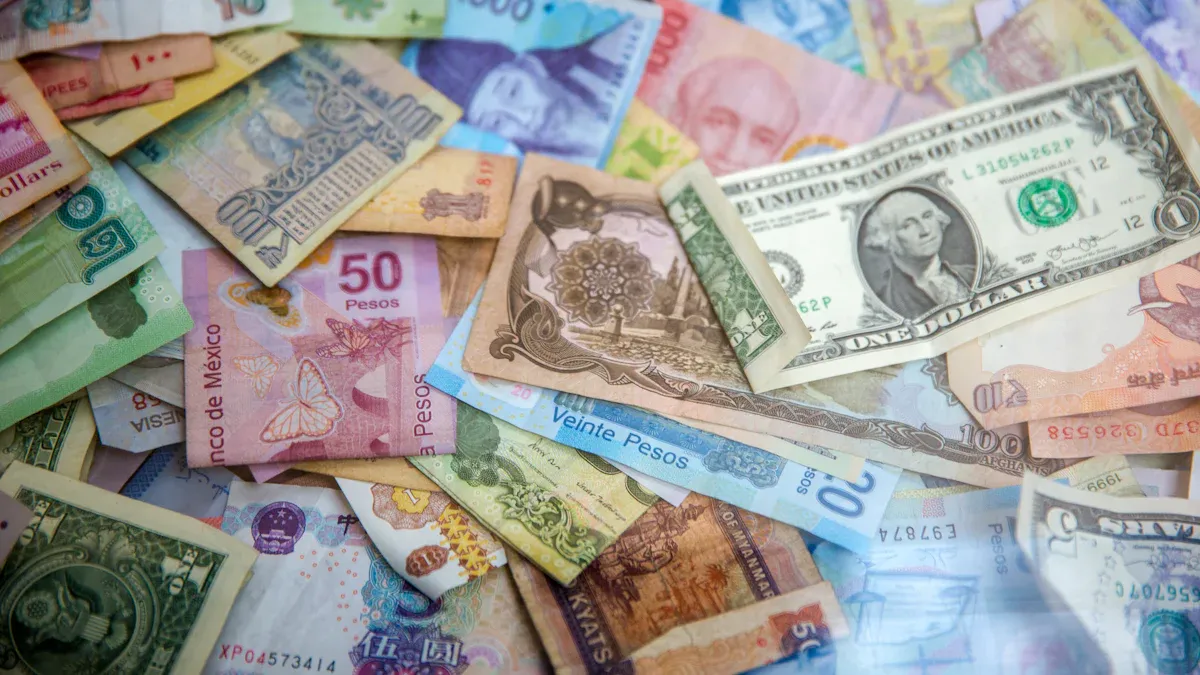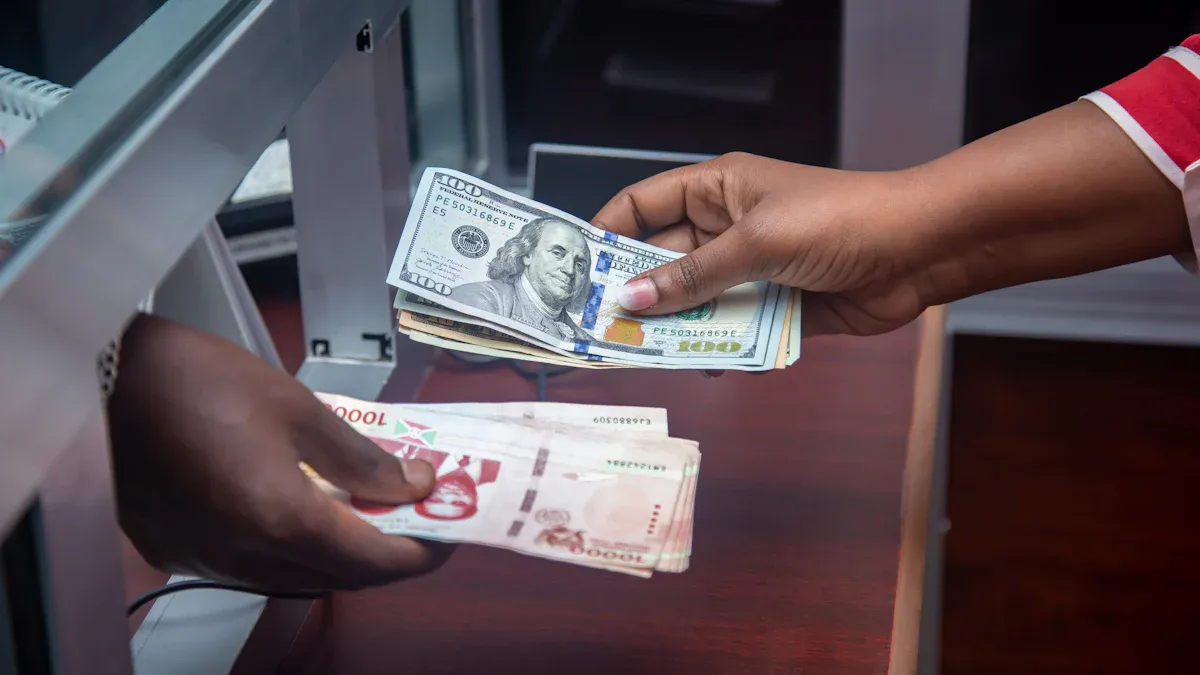- EasyCard
- Trade
- Help
- Announcement
- Academy
- SWIFT Code
- Iban Number
- Referral
- Customer Service
- Blog
- Creator
What is the Monthly Limit of Western Union Remittance? A Detailed Explanation of Remittance Regulations in Various Countries

Image Source: unsplash
Western Union remittance processes approximately 25% of global remittance volume. Although its market share has shifted since 2009, it remains a key player in global remittances. Many people are therefore concerned about the specific figures for Western Union’s monthly limit.
You need to understand a core fact: Western Union typically does not have a fixed “monthly limit.” The real restrictions are primarily on single transaction amounts and daily cumulative amounts. These limits vary significantly depending on your country, the recipient’s country, and the type of service you choose (online or agent location).
Key Points
- Western Union typically has no monthly limit; the main restrictions are on single and daily remittance amounts.
- For remittances exceeding $3,000, you need to complete identity verification to increase your limit.
- Different countries have different remittance regulations; for example, Japan has a clear monthly limit.
- Before remitting, you should check real-time limits and fees on Western Union’s website or app.
- Completing identity verification can significantly increase your remittance cap, up to $50,000.
Core Rules for Western Union Remittance Limits
Instead of focusing on a vague monthly total, you should pay attention to the three core rules Western Union uses to set limits. Understanding these rules can help you complete remittances more smoothly.
Single and Daily Limits Are Key
Western Union’s restriction system is primarily designed around single transactions or cumulative amounts within 24 hours. It does not track how much you remit in a month. In many countries, the upper limit for a single online remittance is around $10,000. However, this is only a reference value, not an absolute rule. Actual limits dynamically adjust based on the laws and regulations of your country and the recipient’s country/region.
Verification Requirements for Large Remittances
When your remittance amount exceeds a certain threshold, Western Union will require additional verification information. This is to comply with anti-money laundering (AML) regulations and protect your funds’ safety.
Important Note: $3,000 is typically a key verification threshold. Once your remittance amount approaches or exceeds this figure, be prepared to undergo identity verification.
Specifically, your account verification status directly determines your remittance cap:
- Unverified Accounts: Typically can send up to $3,000.
- Verified Accounts: Limits can significantly increase, up to a maximum of $50,000.
This reinforces that focusing on single transaction limits and account verification status is more practical than seeking a fixed Western Union monthly limit.
Minimum Remittance Amount Restrictions
Compared to high-amount restrictions, the minimum remittance amount requirements are much more lenient. Western Union’s minimum remittance amount is typically very low, such as just $1. This design makes small personal transfers very convenient. Of course, the specific minimum amount should be confirmed based on system prompts when initiating the remittance.
Country-Specific Limit Examples: U.S., China, and Other Regions

Image Source: unsplash
Financial regulations vary widely across the globe, directly leading to different Western Union remittance limits in different countries. Understanding these specific examples can help you better plan your remittances. Below, we detail examples for the U.S., China, and other typical regions.
Sending from the U.S.: Verified vs. Unverified Accounts
If you are sending money from the U.S. through Western Union, your remittance cap primarily depends on your account’s verification status. This reflects security measures to comply with anti-money laundering regulations.
- Base Limit: For a newly registered, unverified account, your remittance capacity will be restricted.
| Account Type | Single Online Remittance Limit (USD) |
|---|---|
| Unverified Account | $3,000 |
- Increased Limit: To send larger amounts, you must complete identity verification. This typically requires providing a government-issued photo ID (e.g., passport) and proof of address (e.g., utility bill). After verification, your limit can significantly increase, up to $50,000 USD.
Note: Even for verified accounts, the single online transfer limit is typically capped at around $7,000 USD, with the specific amount displayed by the system during operation.
Receiving in China: Foreign Exchange Limits and Frequency
When sending money to recipients in China/mainland, you need to consider not only Western Union’s sending limits but also the foreign exchange regulations in the recipient’s location.
According to China’s State Administration of Foreign Exchange (SAFE), each resident in China/mainland has an annual foreign exchange quota for simplified conversion and settlement.
Core Regulation: The annual limit for individuals to convert (foreign currency to RMB) is equivalent to $50,000 USD.
This means that even if you can send more than $50,000 from abroad, the total amount a recipient can convert to RMB and use within a year is restricted by this limit. Amounts exceeding this require an application to the foreign exchange authority, which is a more complex process.
Additionally, the frequency of receiving remittances may be monitored. For reasons like family support or salary payments, if a recipient receives remittances too frequently (e.g., more than 15 times a month), it may attract bank scrutiny and require additional explanations.
Japan Exception: Detailed Western Union Monthly Limit
Unlike most countries, Japan is one that explicitly enforces a Western Union monthly limit. If you are sending from Japan, you must adhere to the following clear tiered restrictions:
- Single Transaction Limit: 1 million JPY (approx. $6,400 USD)
- Daily Limit: 1 million JPY (approx. $6,400 USD)
- Monthly Limit: 1 million JPY (approx. $6,400 USD)
- Annual Limit: 3 million JPY (approx. $19,200 USD)
This example clearly shows that seeking a uniform global Western Union monthly limit is unrealistic; you must focus on the specific regulations of the sending country.
Other Regions and Partner Channel Limits
Limits vary significantly across countries and channels. Here are some additional examples:
- UK: Unverified UK users typically have an online remittance limit of 800 GBP (approx. $1,000 USD).
- Partner Bank Channels: When using Western Union services through certain partner banks (e.g., some licensed banks in Hong Kong), limits may be lower. For example, some banks may set a 24-hour remittance cap at $999.99 USD.
- Remittance to Specific e-Wallets: If you choose to send funds to a recipient’s Alipay account, the single transaction limit is typically $7,000 USD.
These examples reaffirm that the best practice before remitting is to log into Western Union’s website or app, enter your specific remittance details, and the system will calculate the most accurate real-time limit for you.
Other Factors Affecting Limits and Fees

Image Source: pexels
In addition to country regulations, your chosen payment and receiving methods also affect remittance limits. Understanding the fee structure can help you more accurately calculate total costs.
Impact of Payment and Receiving Methods
Your remittance limit is not fixed and varies with your operational choices.
Your chosen payment method directly affects your remittance cap. Typically, using a debit card allows higher transaction limits than a credit card, especially when sending to a bank account. If you need to transfer larger amounts, such as for family support or international service payments, a debit card offers greater flexibility.
Additionally, the receiving method (e.g., cash pickup, bank transfer) also impacts the maximum amount for a single transaction.
Fee Structure
Western Union’s fees consist of two main components, understanding which can help you avoid unexpected expenses.
- Transaction Fee (Upfront Fee): This is a fixed fee you pay when remitting. This fee varies based on the remittance amount, destination, and payment method.
- Exchange Rate Margin: This is the profit Western Union earns through exchange rates. The rates they offer are typically slightly worse than the mid-market rate (used in interbank transactions). This margin, though small, increases your total cost. For example, the market rate might be 1 USD = 0.862 EUR, while Western Union’s rate might be 1 USD = 0.855 EUR.
Additional Fee Reminder: When choosing to send funds directly to a recipient’s bank account, additional fees may apply. Some intermediary or receiving banks may charge their own deposit fees. These fees will not appear on Western Union’s receipt.
How to Check Real-Time Limits and Fees
The most reliable method is to use Western Union’s official tools to check before remitting. This ensures you get the most accurate and up-to-date information.
You can follow these steps:
- Visit Western Union’s Website: Open the Western Union website for your region.
- Find the Estimator Tool: The homepage typically has a “Send Money” or “Estimate Fees” entry point.
- Enter Remittance Details:
- Select your sending country and the recipient’s country.
- Enter the amount you plan to send.
- Choose your payment method (e.g., bank account, credit card, or debit card).
- Select how the recipient will receive the funds (e.g., cash, bank account).
- View Results: The system will immediately display the maximum limit for the transaction, required fees, the exchange rate used, and the final amount the recipient will receive.
Taking this step in advance is key to ensuring a smooth remittance.
Stop searching for a uniform Western Union monthly limit. Western Union’s services span over 200 countries and regions globally, with restrictions primarily on single or daily transactions. The most important action is to check real-time information on Western Union’s website or app before remitting, with 32% of transactions now completed through these digital channels.
Pre-verification is key to a smooth remittance. This allows you to fully leverage Western Union’s trusted speed and reliability to complete every transfer successfully.
FAQ
Does Western Union really have no monthly limit?
Yes, there is typically no globally uniform “monthly limit.” Western Union’s restrictions are mainly based on single and daily transaction amounts. The exception is a few countries like Japan, which have clear monthly regulations. You need to focus on the specific rules of your location.
What determines my remittance cap?
Your remittance cap is primarily determined by two factors:
- The financial regulations of your sending country and the recipient’s country.
- Whether your account has completed identity verification.
After verification, your limit can increase significantly from around $3,000 USD to a maximum of $50,000 USD.
How do I check the specific limit for my remittance?
The most accurate method is to use Western Union’s official tools. Simply enter the sending country, receiving country, and amount on the website or app, and the system will immediately display the applicable maximum limit, fees, and exchange rate for that transaction.
What should I do if I want to send a large amount (e.g., over $3,000 USD)?
You need to complete identity verification. Prepare your ID (e.g., passport) and proof of address. Once your account is verified, your remittance limit will significantly increase, allowing you to smoothly handle larger transfers.
*This article is provided for general information purposes and does not constitute legal, tax or other professional advice from BiyaPay or its subsidiaries and its affiliates, and it is not intended as a substitute for obtaining advice from a financial advisor or any other professional.
We make no representations, warranties or warranties, express or implied, as to the accuracy, completeness or timeliness of the contents of this publication.




Contact Us
Company and Team
BiyaPay Products
Customer Services
is a broker-dealer registered with the U.S. Securities and Exchange Commission (SEC) (No.: 802-127417), member of the Financial Industry Regulatory Authority (FINRA) (CRD: 325027), member of the Securities Investor Protection Corporation (SIPC), and regulated by FINRA and SEC.
registered with the US Financial Crimes Enforcement Network (FinCEN), as a Money Services Business (MSB), registration number: 31000218637349, and regulated by FinCEN.
registered as Financial Service Provider (FSP number: FSP1007221) in New Zealand, and is a member of the Financial Dispute Resolution Scheme, a New Zealand independent dispute resolution service provider.



















